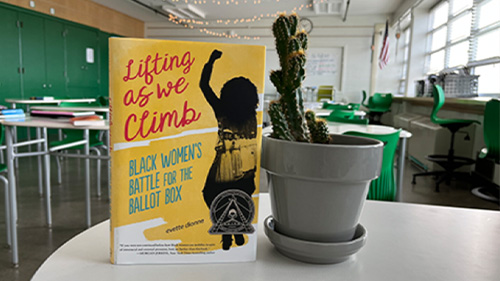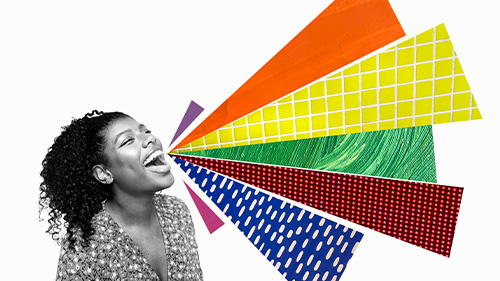The Gift of Reading: Of Authors, Words, and Magic
For most of the past year and half, I have spent most of my waking hours querying or obsessing over querying literary agents for my young adult novel
AP & Honors Mathematics
Explore Wiley titles to support both AP and Honors mathematics instruction.
Literacy Skills & Intensive Reading
Connections: Reading – Grades 6–12
Empower student success with a proven intensive reading program that develops strong reading skills in striving readers.
Drama, Speech & Debate
Basic Drama Projects 10th Edition
Build students’ confidence and competence with comprehensive, project-based theatre instruction.
Literature
Connections: Literature
Support learners as they study dynamic, relevant texts and bring the richness of diverse voices to students through literature.
Literature & Thought
Develop critical thinking, reading, and writing across literacy themes, genres, historical eras, and current events.
Language Arts
Vocabu-Lit® – Grades 6–12
Help students build word power using high-quality contemporary and classic literature, nonfiction, essays, and more.
Connections: Writing & Language
Help students develop grammar, usage, mechanics, vocabulary, spelling, and writing and editing skills.
Reading/English Language Arts
Measuring Up to the English Language Arts Standards
Incorporate standards-driven teaching strategies to complement your ELA curriculum.
English Language Learners
Measuring Up for English Language Learners
Incorporate research-based best practices for ELLs with an approach that includes a focus on language acquisition strategies.
Mathematics
Measuring Up to the Mathematics Standards
Incorporate standards-driven teaching strategies to complement your mathematics curriculum.
Foundations
Measuring Up Foundations
Help students master foundational math skills that are critical for students to find academic success.
Science
Measuring Up to the Next Generation Science Standards
Give students comprehensive NGSS coverage while targeting instruction and providing rigorous standards practice.
Assessment
Measuring Up Live
Deliver innovative assessment and practice technology designed to offer data-driven instructional support.
For a better website experience, please confirm you are in:
Student writers—especially reluctant ones—often struggle with choosing the most fitting words to create an appropriate tone or mood in their writing. As a result, their essays end up with a lot of words like “nice” or “things” or “people.” These words are fine (another less-than-stellar word), but writing should captivate a reader with its vividness and ability to transport us to another place and time in which we can experience what we are reading.
For years I have tried to get students to revise their writing for more purposeful and impactful diction. What I would get is a lot of right-click synonyms, that, while they were more complex words, had connotations that weren’t exactly correct. If I could just get them to see the redundancy and poor word choice…and that’s when it hit me; they should make a word cloud. It has changed how I teach diction and my students' success in revising for it.
For those unfamiliar, word clouds are visual representations of words. The bigger and bolder the font of a word in the image, the more the word is used in the text. By that theory, the largest and boldest word should be your text's main idea or theme. Many students are surprised to see words like “thing” or “some” take this spot in their word cloud. The depth of analysis of the word cloud has surpassed any peer conference or self-review I have used to date.
Here are the steps I have my students use to create a word cloud to analyze:
To demonstrate what the analysis portion of this would look like, I will use an article I wrote for a newspaper column a few years ago about a dear friend and coworker as my sample essay. When I paste the article in the word cloud generator, this is what it looks like:
I have the students answer only three analysis questions about their word cloud:
So if I were answering those questions about my word cloud, I would say something like this:
I always think it is a good idea to model activities for students, especially those that involve self-reflection. If you use this activity, you could either use an anchor text you used in class or ask a student from another class if you could use theirs as a sample—or you could write a sample essay.
Whatever method you choose, my hope is that this activity will be as successful in your classroom as it has been in mine. May the visual representation of redundancy and poor word choice lead to much clearer and precise student essays.

For most of the past year and half, I have spent most of my waking hours querying or obsessing over querying literary agents for my young adult novel

In Kimberly Brubaker Bradley’s Fighting Words, 10-year-old protagonist Della gives readers a front row seat to her daily life in foster care with her...

It's almost the end of the school year! With the exam behind you and your students, take a moment in class to reflect on this past year (while giving...

"The “Words of Doom” were an addition to our spelling instruction in middle school ELA. They could easily be adjusted or modified for upper...

My favorite thing about Lifting As We Climb: Black Women’s Battle for the Ballot Boxby Evette Dionne is that it’s accurate, and the author highlights...

Although our middle school ELA students should have been capitalizing words like "I" since they were in early elementary school, many either just...

If we all trace our lineage back generation by generation, you will almost always find a fearless woman at the forefront of care, kindness, and the...

Join us for a conversation in partnership with Simon & Schuster with women YA and children's authors about the experience of being a woman in the...

Just last week, my oldest son asked me what I wanted for Christmas. My answer? Nothing.

Join us for a conversation in honor of Women's History Month in partnership with Simon & Schuster with authors Alicia D. Williams, Priyanka Taslim,...

In recent months, the Taliban in the Middle East has taken over once again after American troops removed themselves. The first person I thought of...

The main character in The Girl with the Louding Voice by Abi Daré, Adunni, is on a personal journey to give herself the best life she can despite...

